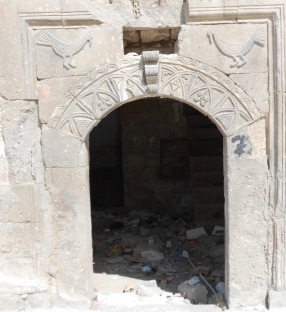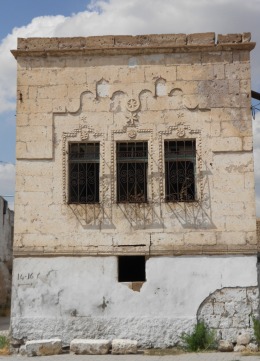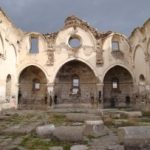A Town named Creamy Population: 4,300
Old names: Anakou (Greek), İnegi (Turkish)
Market day: Thursday
Kaymakli is home to one of Cappadocia‘s most visited underground cities, second in popularity only tonearby Derinkuyu.
For most people that is the extent of its interest but if you have some free time you might like to take a stroll round the narrow streets behind the underground city entrance where you will find many old stone houses with fine carved doorways and window-frames, most of them now sadly abandoned as local people move into modern houses built on the substantial proceeds of potato farming.
Here you may also come across the Kurşunlu Cami which dates back to 1735, making it virtually contemporary with the bigger Damad İbrahim Paşa Cami in Nevşehir. Inside its mihrab copies features from Selçuk architecture and there’s a rather striking stone mimber. The hamam associated with it has since been turned into a small local library.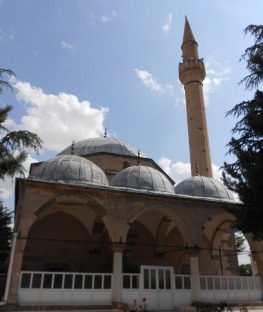
Nearby you will also see the 19th-century Greek Orthodox church, a sizeable building, now completely derelict, that was never given a belltower.
While most of the old stone houses are quite small there are also a couple of imposing mansions. To look at the dates carved on the facades is to realise that they were built less than 20 years before the 1924 population exchange that forced all the local Greeks to leave the area.
Traces of colour on some facades certainly suggest that at one time some of them were painted bright blue. If you look at some of the stone drains you will see that they have been carved to look almost like ram’s heads.
Kaymaklı was already known as a flourishing agricultural centre in the late 19th century when the French traveller Charles Texier drew a picture of locals wearing some extraordinary horned headdresses while threshing their corn.
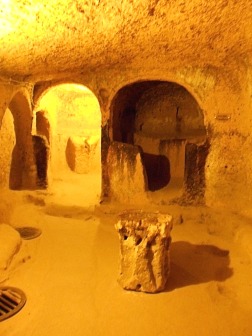 Underground churchUnderground city
Underground churchUnderground city
As in Derinkuyu, the underground city at Kaymaklı penetrates deep into the earth. The topmost layer was almost certainly used for stabling animals but the floors below contain what are believed to be living areas, storerooms and wine-making areas where the grapes would have been trodden in huge stone niches, the juice trickling out through holes into large containers.
In many places the floors are indented with hollows into which storage jars would have been set. Candles were probably placed in niches in the walls to provide light. At one point it’s possible to see a ventilation shaft that runs right from the surface to the bottom layer of the “city”.
One of the rooms has been identified as a church with an arched apse and a detached stone table that might have served as an altar. Elsewhere hollows in the ground have been identified as burial sites.
In several places it’s also possible to see the giant rolling stones that were used to close off tunnels when it was thought that enemies might be approaching.
One particular curiosity of the Kaymaklı underground city is a huge stone with many indentations in its surface that may have been used to hold candles or perhaps to store herbs.
Unfortunately “improvements” to the approach to the entrance detract from rather than adding to the experience of a visit.
Sleeping
Most people visit Kaymaklı from the tourist hotspots of Göreme, Uçhisar, Avanos, Ürgüp or Ortahisar. However, it is also possible to stay in the town itself.
Hotel Crystal. Tel: 0384-218 2917
Transport info
Minibuses to Kaymaklı leave the Meteris Kavsağı (junction) in Nevşehir (20km) every half-hour. Buses to Derinkuyu and Niğde also pass through it.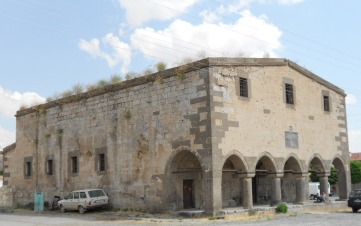 Late 19th-century church
Late 19th-century church
Some of the tours organised by Cappadocian travel agents include a visit to Kaymaklı.
Day trip destinations
Göre
Mazı
Özluce
